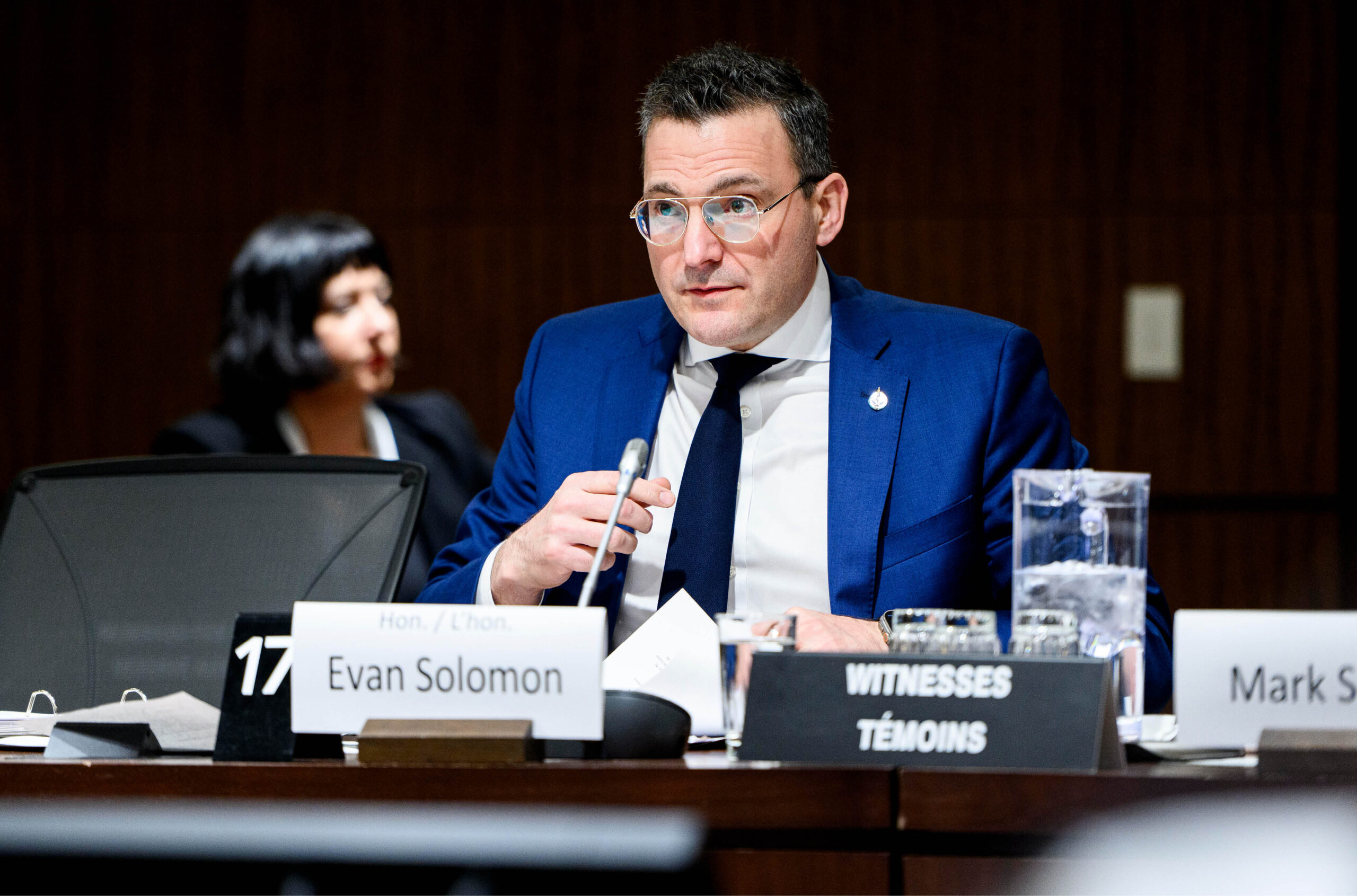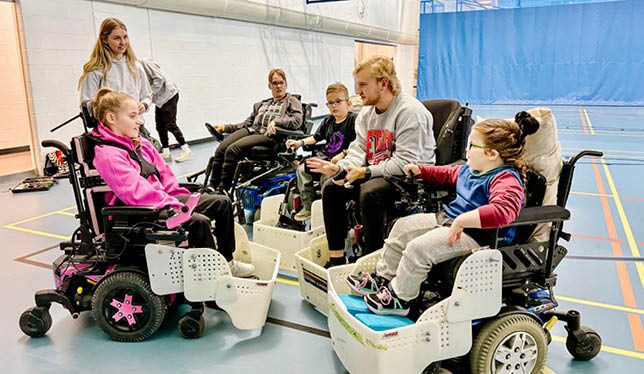Neurodiversity in Canadian postsecondary education
More support and recognition needed according to Conference Board of Canada report.

Despite increased access to postsecondary education, neurodivergent students remain underrepresented in Canadian institutions and less than half disclose their identities and diagnoses, according to a recent report by The Conference Board of Canada and the Future Skills Centre. Neuroinclusive policies and practices can promote student retention and success, says the report, but they need to be integrated and centralized.
Creating Inclusive Campuses: Neuroinclusive Policies and Practices in Post-Secondary Education examines the experiences of neurodivergent students in Canadian postsecondary education and provides recommendations for how institutions can improve neuroinclusion on their campuses. “There’s a need to focus on individuals but we also need system change,” said Jennifer Fane, lead research associate with The Conference Board of Canada and the report author. There has been an increase in inclusive pathways into postsecondary and institutions are offering accommodations but “there are these persistent barriers that students are encountering,” she said.
The report draws on the first national survey of neurodiversity in Canadian postsecondary education, which invited students who identify as neurodivergent (either due to a formal diagnosis or self-identification) to participate. Neurodivergence is a non-medical term that typically encompasses conditions such as autism, attention deficit hyperactivity disorder, learning disabilities and other neurological differences. The survey included 400 neurodivergent postsecondary students and recent graduates, as well as 78 interviews with neurodivergent students, recent graduates and staff and leaders working in accessibility services. The report is the second in a series, following a November 2024 report on the quantitative survey data.
The more than half of responding students who reported not disclosing their identities or diagnoses to their institution cited barriers that include challenges with diagnosis, disclosure and registration, inflexible processes and timelines, and fears of stigma and discrimination. Implementing mandatory neurodiversity training for all campus employees and integration of accessibility into institutional equity, diversity and inclusion (EDI) strategic planning and policy development top the report’s recommendations. “All Canadian institutions are focused on EDI,” said Dr. Fane, but “it really has not included people with disabilities and neurodivergent individuals”. The report found that staff and leaders who reported neurodiversity was adequately being addressed in their institutions indicated that there had been a focus on accessibility within policies. The institutions had expanded the traditional EDI framework to EDI-A (equity, diversity, inclusion and accessibility) or IDEA (inclusion, diversity, equity and accessibility). Integrating accessibility into EDI would also provide a focus on measuring impact and growth, said Dr. Fane – a component that is currently lacking.
It is estimated that anywhere from 10 to 20 per cent of the population is neurodivergent, but there is no clear data on the number of neurodivergent students in Canadian higher education. This “huge gap” in data is what makes the report important, said Carly McMorris, associate professor at the University of Calgary and a member of the project’s research advisory committee. “This report is really highlighting the need across neurodivergent areas,” said Dr. McMorris. “Although I’m very focused on supporting individual needs,” she said, “I also recognize how our campuses are not neuroinclusive, meaning that it’s not just up to the neurodivergent person to be able to survive in postsecondary, but rather it’s up to neurotypical folks to provide an environment that’s neuroinclusive.”
“This is a group that is in high need of support and it hasn’t been something that institutionally, I think, across Canada has been recognized,” said Dr. McMorris. She said that the report’s recommendations around the need for wraparound services, training for faculty and staff and establishment of low-sensory spaces could help students thrive. This report “is probably one of the most influential policy pieces that will move things forward in this field,” she said.
While the report provides actionable items, Dr. Fane recognized that this is happening at a time when many postsecondary institutions are struggling financially. In their interviews, they talked to 30 accessibility services across Canadian colleges, polytechnics and universities, and all reported growth in the number of students accessing services. “They’re not really able to expand services to meet the needs that actually exist in the population without a really different view on it.”
Dr. Fane said that the University of Calgary has been a “standout” in this area with their Neurodiversity Support Office which provides an example of how services can be centralized and integrated. Another example is Kwantlen Polytechnic University’s All Citizens Pathway. Spearheaded by Fiona Whittington-Walsh, professor of sociology and lead advisor on disability, accessibility and inclusion at KPU, the program integrates students with intellectual and/or learning disabilities into undergraduate, for-credit classes. Instead of individual accommodations, courses are designed to be inclusive and accessible. “Everybody in the class has access to the same supports,” said Dr. Whittington-Walsh. “They do not need to get any kind of academic accommodations because the philosophy is that we build all of this accessible design into our teaching and into our practice.” Based on the foundation of Universal Design for Learning principles, the program uses what Dr. Whittington-Walsh calls “critical disability pedagogy”.
“There are lots of examples of great practice and more and more I am seeing really game-changing things happen, but the progress is just really slow,” said Dr. Fane. “What the research has tried to do is make sure that individuals know more about how they can navigate the system better, the types of evidence-based strategies that might work, but then we also just need the systems to do their jobs so that the individuals are having more success with those strategies.”
Other recommendations in the report include:
- Address misconceptions about accommodations among faculty members through training on legal obligations, standardized processes, guidance and a formal process to address instances where a student’s right to accommodations is not being upheld.
- Include neurodivergent students, staff and faculty in policy-making to enhance institutional neuroinclusivity.
- Centralize neurodiversity supports to ensure coordinated access to accessibility services, mental health services, support programs and other services.
- Provide neurodivergent students with targeted information relevant to their learning and cognitive profiles, as well as available services and supports, to help them develop their self‑advocacy skills.
- Increase flexibility in institutional processes, including early access to course details and lengthened drop/withdrawal timelines, so that students can make informed decisions about course suitability.
- Set measurable outcomes to track progress and ensure accountability.
Featured Jobs
- Engineering - Assistant or Associate Professor (Robotics & AI)University of Alberta
- Sociology - Professor (Quantitative Data Analysis Methods and Social Statistics)Université Laval
- Law - Assistant or Associate Professor (International Economic Law)Queen's University
- Architecture - Assistant Professor (environmental humanities and design)McGill University
- Geography - Assistant Professor (Indigenous Geographies)University of Victoria












Post a comment
University Affairs moderates all comments according to the following guidelines. If approved, comments generally appear within one business day. We may republish particularly insightful remarks in our print edition or elsewhere.